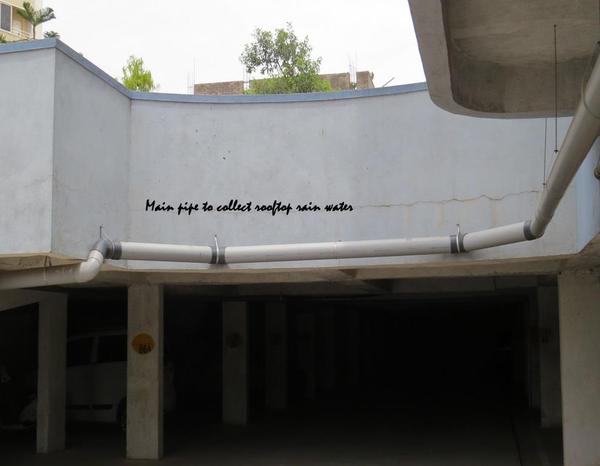Current scenario of water availability in Bangalore seems to be grim with ground water almost over and tanker mafia twisting our arms. Last year’s indication of dry weather prompted our apartment to find out an easy way of collecting rainwater as a proper rainwater harvesting system was not made initially.
Zephyr Block of Suncity Apartments, Ibblur, thought of using the flat roofs of the building to collect rainwater. Roof rainwater pipes were attached to a main big pipe and then to a small tank.
The initial water collected in the small tank and after a while the clean water starts going into the main underground tank. This takes care of the initial dirt and pollution coming down with the rains.
This system was made last year after the rains, so it did not give much results. On this year’s first thunder storm on 2nd June, it rained very heavily and the water collected was about four tankers worth of clean soft water. Using that water for washing bathing was a wish granted after a long time as the water we currently use is very hard.
If a night of rains could do that what would the entire rainy season give. It can give us water self-sufficiency for at least some months. Kudos to the team of Zephyr block who worked hard to get this system working. Every building in the city can use their roofs for some type of rain water harvesting and Zephyr people have shown the way.
References
http://www.firstpost.com/india/will-bangalore-have-to-be-evacuated-by-2023-697649.html
http://www.nandannilekani.in/en/blog/26-managing-the-water-crisis-in-bengaluru
Related Articles
What do the rain gods have in store for Bengaluru?
Conserving rainwater
Replenish aquifers with rainwater harvesting

Great initiative!
Annual rainfall in Bangalore is about 75 cm average, so every 1000 sqft will collect about 65000 litres of water in a year, which is the equivalent of 16 tankers (4000 litres ea.) and that too very clean water!!
You can count your savings.
Nice blog..
Rainwater harvesting is one of the most efficient methods of water management and water preservation. It is the term used to indicate the collection and storage of rain water used for human, animals and plant needs. It involves collection and storage of rain water at surface or in sub-surface aquifer, before it is lost as surface run off. The augmented resource can be harvested in the time of need.